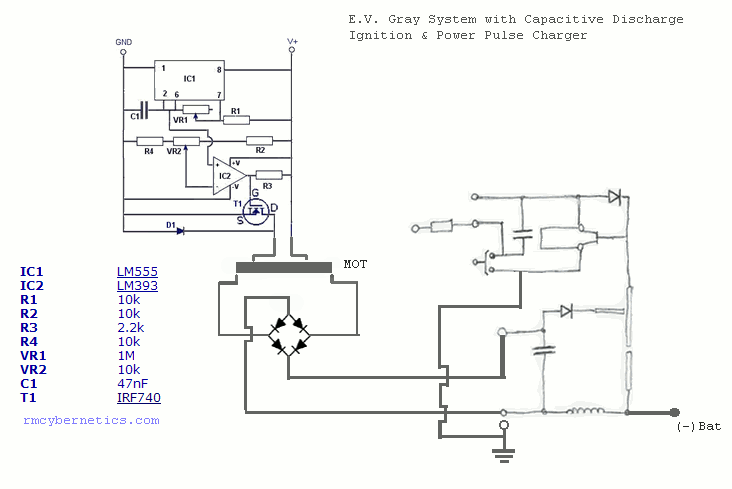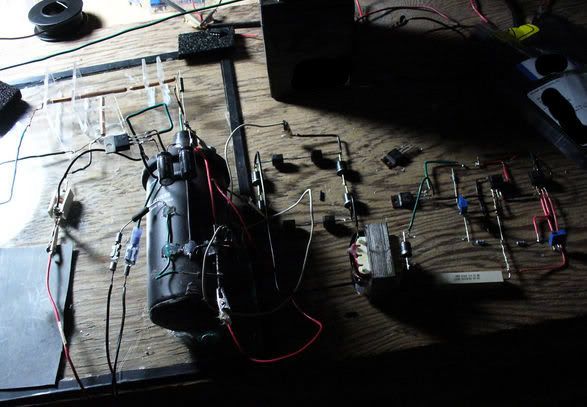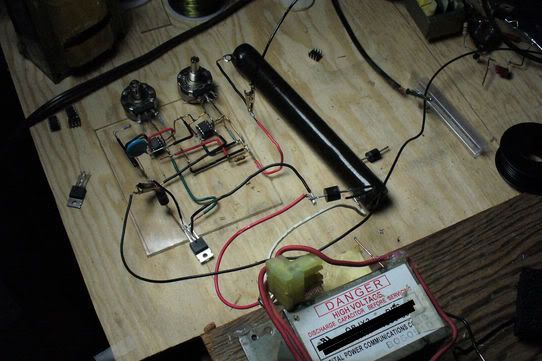Originally posted by nat1971a
View Post
I found an interesting intro into thyratrons:
http://www.e2v.com/assets/media/file...n_preamble.pdf
http://www.tuks.nl/pdf/Reference_Mat...s_Preamble.pdf
The hydrogen thyratron is a high peak power electrical switch which uses hydrogen gas as the switching medium. The switching action is achieved by a transfer from the insulating properties of neutral gas to the conducting properties of ionised gas. Exploiting the basic principles of gas discharge physics, the hydrogen thyratron is designed to withstand a high voltage in the ‘off’ state, to trigger at a precisely defined time, to pass high peak current pulses in the ‘on’ state and to recover rapidly to the ‘off’ state to allow high repetition rate operation.
The process of switching in a hydrogen thyratron can be broken down into four phases. These are voltage hold-off, commutation, conduction and recovery.
Interestingly, there's a part about how thyratrons compare to spark gaps:
Thyratrons are designed to withstand a high voltage on the anode and to trigger with a low voltage on the grid. Voltage breakdown in any gas-filled gap is initiated by free charges (electrons and ions) crossing the gap under the influence of an electric field. If sufficient energy is available, gas molecules are ionised producing more free charges. The positive ions are accelerated towards the lower potential electrode and cause the release of secondary electrons. Under the right circumstances, the processes become self-sustaining and voltage breakdown occurs. The breakdown behaviour is described by Paschen’s law, where the breakdown voltage V of an electrode/gas system is a function of the product of pressure p, and electrode separation d:
V = f (pd).
The graph of this relation is of the form shown in Figure 3 and the breakdown voltage has a minimum at the pd value, designated pdmin. The breakdown voltage rises on either side of pdmin and it is thus possible to find two values of pd which give the same breakdown voltage. For example, thyratrons operate on the low pd or left-hand side of the curve. Spark gaps operate on the high pd or right-hand side of the curve.
V = f (pd).
The graph of this relation is of the form shown in Figure 3 and the breakdown voltage has a minimum at the pd value, designated pdmin. The breakdown voltage rises on either side of pdmin and it is thus possible to find two values of pd which give the same breakdown voltage. For example, thyratrons operate on the low pd or left-hand side of the curve. Spark gaps operate on the high pd or right-hand side of the curve.
Some more on thyratrons here:
Gas discharge tubes : THYRISTORS
In essence, thyratron tubes were controlled versions of neon lamps built specifically for switching current to a load. The dot inside the circle of the schematic symbol indicates a gas fill, as opposed to the hard vacuum normally seen in other electron tube designs. In the circuit shown above in Figure above. the thyratron tube allows current through the load in one direction (note the polarity across the load resistor) when triggered by the small DC control voltage connected between grid and cathode. Note that the load's power source is AC, which provides a clue about how the thyratron turns off after its been triggered on: since AC voltage periodically passes through a condition of 0 volts between half-cycles, the current through an AC-powered load must also periodically halt. This brief pause of current between half-cycles gives the tube's gas time to cool, letting it return to its normal "off" state. Conduction may resume only if enough voltage is applied by the AC power source (some other time in the wave's cycle) and if the DC control voltage allows it.








Comment